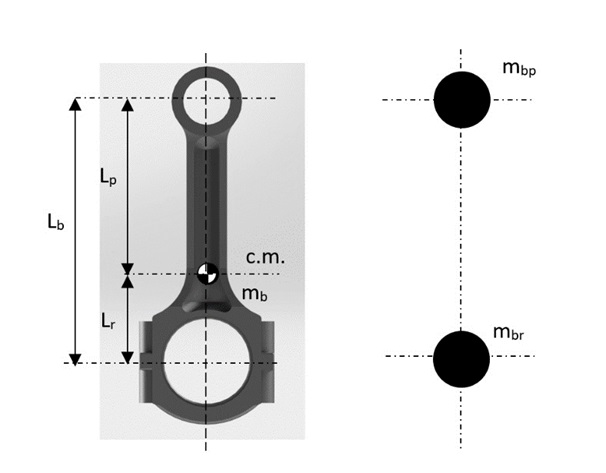The study presents a novel methodology for predicting the actual instantaneous volume inside the cylinder in the combustion chamber of an alternative internal combustion engine. The mathematical model developed as part of this methodology takes into consideration deformations due to pressure and inertia forces, through a deformation constant adjusted through ANSYS®, using a high precision CAD model of a SOKAN SK-MDF300 engine. The results were compared with previous models published in the literature, which shows that the deformation constant obtained has a smaller variation between cycles, leading to a more precise value of mechanical deformations. The influence of the introduced volumetric variation was evaluated through a combustion diagnostic process, evidencing the improvement in the predictive capacity of thermodynamic modeling and, therefore, the correct prediction of the heat release rate in thermal machines.
ABSTRACT: A new methodology for predicting the real instantaneous in-cylinder volume in the combustion chamber of a reciprocating internal combustion engine is implemented. The mathematical model developed as part of this methodology, takes into consideration the deformations due to pressure and inertial forces, via a deformation constant adjusted through ANSYS®, using a high-precision CAD model of a SOKAN SK-MDF300 engine. The deformation constant was obtained from the CAD model using the computational tool ANSYS® and the pressure data was obtained from the engine running at three regimes: 1500, 2500, and 3500 rpm. The results were compared with previous models reported in the literature, showing that the deformation constant obtained has a smaller variation among cycles, which leads to a more precise value of the mechanical deformations. Furthermore, to have a more accurate model of the instantaneous volume variation, a factor taking into consideration the lubricant film behavior is introduced to calculate volumetric variation due to geometrical clearances. The influence of the introduced volumetric variation was evaluated through a process of combustion diagnosis, evidencing the improvement in the predictive capacity of thermodynamic modeling and, therefore, the correct prediction of heat release rate.
Below you can access the full version of the research product: energies-12-01437. The original article is published in the journal energies Vol. 12 No.8 (2019): energies.

